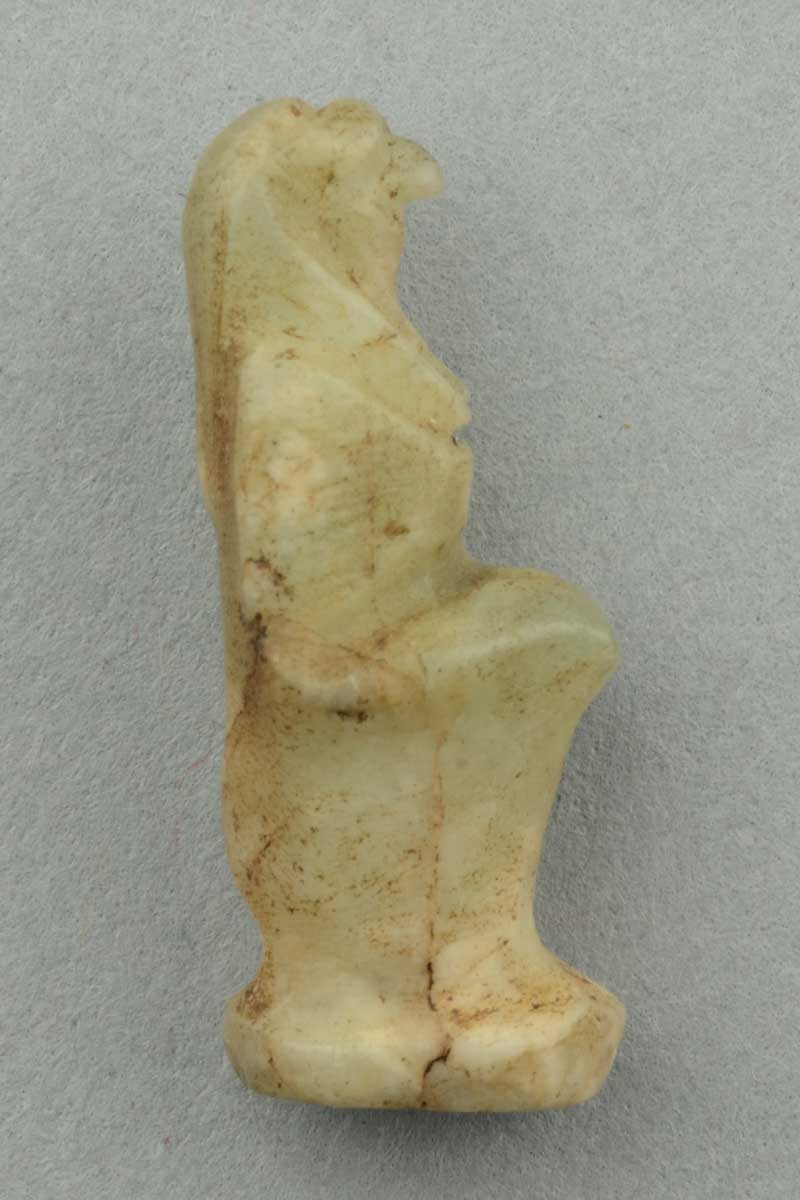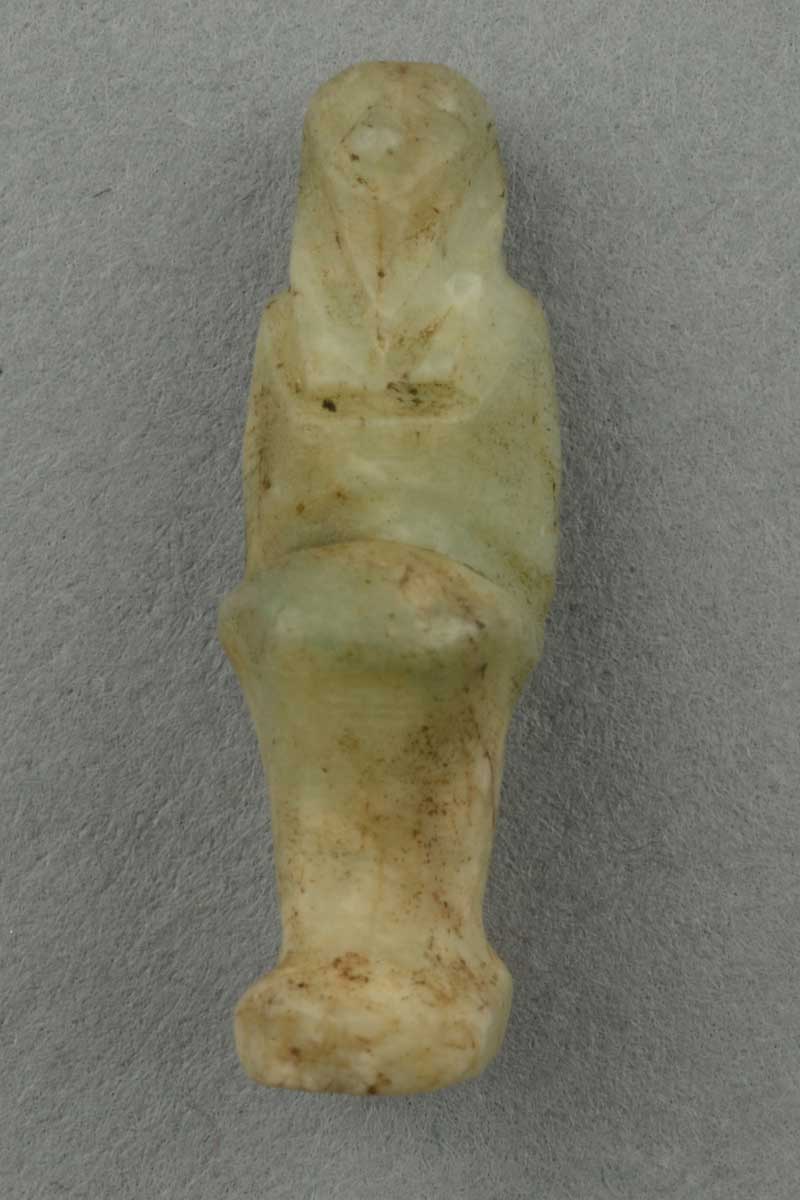Ancient Egyptian Amulets
Falcon-headed God
By Kierra Foley


Measurements: Height: 2.31 cm; Width: 0.73 cm; Depth: 0.9 cm
Material: Stone, Egyptian alabaster
Date: 26th-30th Dynasty, ca. 664-343 BCE
Provenance: Memphis, Egypt
Collection: Mendes Israel Cohen Collection of Egyptian Antiquities, number 93
Description
This alabaster amulet has been carved to depict a squatting mummiform god with a falcon’s head. The deity wears a tripartite wig and sits on a thin base.
Discussion
It is difficult to certainly identify this falcon-headed mummiform god, as many gods in ancient Egypt could assume forms similar to this one. The ancient Egyptian pantheon was highly mutable — sometimes it is nearly impossible for Egyptologists to properly identify the image of a god or goddess without text, as the gods and goddesses were able to assume many forms and acquire many different attributes. The multivalent thinking of the ancient Egyptians allowed them to perceive the gods as ever-changing, including between theriomorphic (animal) and anthropomorphic (human) bodies. The animal attributes of deities often corresponded to their character, thereby enhancing it. For this reason, problems persist in certainly identifying the deities depicted by ancient Egyptian amulets.
The most popular god that assumed the form of a man with a lanner falcon’s head was Horus, the solar god of divine kingship. When mummiform — like in this amulet — his connection to his father Osiris, lord of the afterlife, was most likely being invoked. Amulets of this nature were most frequently used in funerary contexts to call upon the regenerative powers of Osiris, who was revived by his wife Isis to rule the netherworld after being slain by his brother Seth. In burials and mummy wrappings, these mummiform Horus amulets were almost always positioned in close proximity to amulets of Osiris and Isis.
This deity could also be identified as Sokar, a falcon-headed god who presided over the necropolises near Memphis and was often conflated with the patron god of Memphis, Ptah. Amulets of Sokar were common in funerary contexts, because the chthonic (underworld) god primarily oversaw funerary rites to ensure the deceased’s safe passage into the afterlife. Amulets of this type were not used in non-royal burials until after the Saite Period (ca. 664-525 BCE).
References
Andrews, Carol, 1994. Amulets of Ancient Egypt. Austin: University of Texas. 27-9.
Graindorge, Catherine, 2001. “Sokar.” In The Oxford Encyclopedia of Ancient Egypt III, edited by Donald Redford. Oxford and New York: Oxford University Press. 305-7.
Pinch, Geraldine, 2002. Egyptian Mythology: A Guide to the Gods, Goddesses, and Traditions of Ancient Egypt. Oxford: Oxford University Press. 143-6.